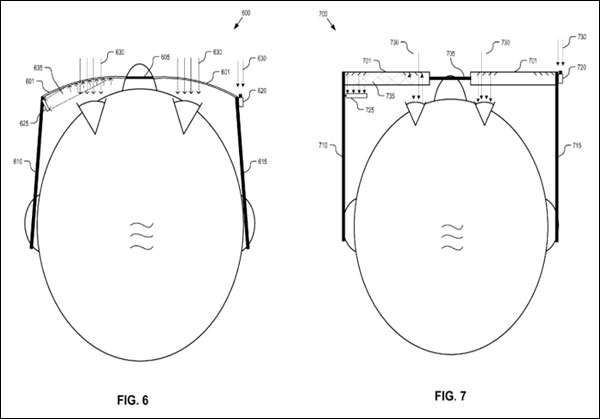Google was granted a patent last week for a Gaze Tracking System which could be employed in devices like Glass in order to track what users look at and charge advertisers on a ‘pay-per-gaze’ basis.
The patent was originally filed with the US Patent and Trademark Office in May 2011 and refers to a system for use with a head-mounted device, which we can now safely assume refers to Google Glass.
Glass is never explicitly named throughout the documentation but images from the filing are very similar, only with a dual-lens design. Descriptions within the document could easily be used to describe the current Glass model, though.
Pay per gaze
The idea is that the system will use eye tracking to determine what advertisements users see – be they online or offline – and, furthermore, determine their emotional response to this advertising by observing their pupil dilations.
This would involve images from the users’ surroundings being beamed back to servers and then analysed by algorithms to identify what the user is seeing, Phys.org reports.
Google foresees a number of useful, everyday applications for a reliable, low-cost and unobtrusive eye-tracking system – but those who benefit will be Google and its advertising partners, not the users.

Diagrams from the patent filing, which look similar to the current Google Glass device
The patent filing describes a ‘pay-per-gaze’ advertising scheme which – in a twist on the current pay-per-click model – charges advertisers whenever users lock eyes on their ads.
“Pay per gaze advertising need not be limited to online advertisements,” reads the patent, “but rather can be extended to conventional advertisement media, including billboards, magazines, newspapers, and other forms of conventional print media.”
The all-seeing eye of Google
The patent also refers to ‘latent pre-searching’, which overlays the user’s view with search results that they didn’t ask for with the ‘Okay, Glass’ command. Rather, the system pre-emptively generates searches based on what’s in view.
What’s more, the system will generate a ‘gazing log’ to track identified items viewed by the user – sort of a visual search history, only one that the user didn’t necessarily request.
Naturally, Google realises the privacy concerns that will arise should it deploy such a system, and the patent suggests anonymised data, encryption and the provision to opt-out as potential solutions.
But what of the users that opt in, and who or what they see? These users themselves would become part of an all-seeing eye of Google, instruments in their designs to gather more and more data. And who’s to say this data can truly be protected, with recent scandals involving government bodies and prying eyes highlighting the lack of security of online data?
Let’s not get ahead of ourselves, though. The Gaze Tracking System is not yet included in Glass and a 2011 patent is not proof that it will be – but it’s a scary thought, nonetheless.